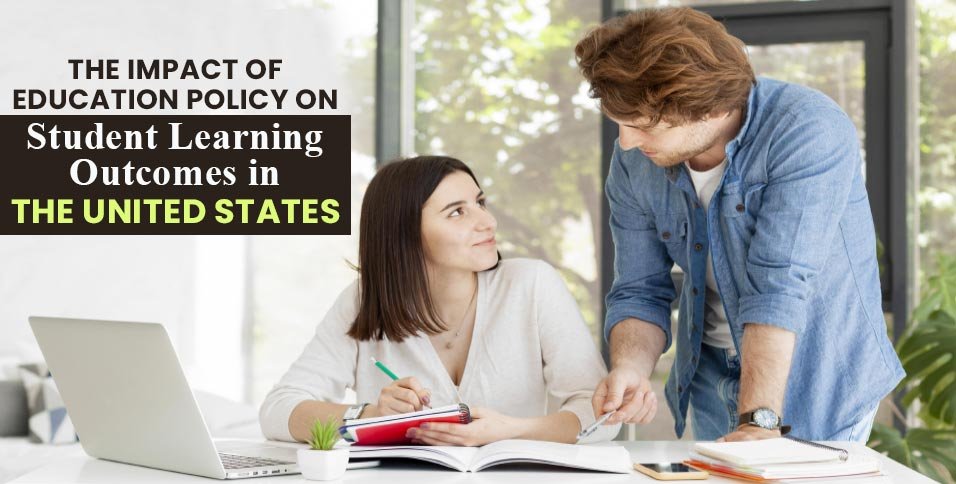In the words of Nelson Mandela, ‘Education is the most powerful weapon which you can use to change the world.’ While Mandela’s wisdom holds universal truth, the landscape of education in the United States is a complex tapestry woven with policies that shape the very foundation of student learning outcomes.
This very education policy is a reason thousands of students need assistance with their academics. They often seek subject wise customized assistances such as English or Finance assignment help from Myassignmenthelp.comor similar academic tutoring companies online. This is a very normal practice that enables students to cope with academic pressure while balancing their lives with their part-time jobs (if any). Also, it is absolutely fine to seek help rather than stressing out too much or being stuck in a place for hours – the time which otherwise could be used in doing something way more productive.
But before moving forward with getting any subject-wise assistance like Adobe Flash assignments help at Myassignmenthelp or similar websites, it is important for you to understand what is impacting their decision. This is our topic of discussion today. If you are interested in understanding what the United States’ education policy can do for students and how impactful it can be on each student’s overall learning, then you are at the right place.
Let us begin with our journey of decoding the reasons behind some of the major academic decisions that students in the United States make.
1. The Policy Puzzle:
Education policies are like pieces of a puzzle. When they fit seamlessly, the picture is clear, and students flourish. However, if a piece is missing or doesn’t align, the entire image becomes distorted. In the U.S., the patchwork quilt of education policies varies from state to state, creating a mosaic that impacts student achievement.
2. Standardization vs. Individualization:
Imagine education policies as a spectrum between standardization and individualization. On one end, there’s the push for standardized testing and uniform curriculum across states. It is like trying to fit every student into the same-sized shoe – uncomfortable and, often, a misfit. On the other end, policies that embrace individualized learning recognize that each student is unique, fostering an environment where learning can thrive, like a well-tended garden.
3. Testing, Testing, 1-2-3:
Standardized testing is the bogeyman under the bed for many students. It’s the necessary evil, like broccoli on the dinner plate – everyone has to face it, but not everyone likes it. The debate rages on whether these tests accurately measure a student’s potential or merely their ability to cram information the night before. It is like judging a fish on its ability to climb a tree – an unfair assessment for many.
4. Funding Fandango:
Money talks, especially in education. The funding formula is the DJ at the school dance, determining the rhythm and flow. Schools in affluent neighborhoods may have a dance floor with a sparkling disco ball, while those in underserved areas might be left tapping their feet in the dark. The impact of funding on student outcomes is undeniable, illustrating that unequal funding is akin to giving some students a head start in a marathon.
5. Teacher Tango:
Teachers are the unsung heroes of education, navigating the intricate dance of policy implementation. A good teacher can turn a dull lecture into a captivating performance, but burdensome policies can feel like dancing in tap shoes on a tightrope. The delicate balance between autonomy and following policy guidelines is crucial as teachers mold the minds of the future generation.
6. Technology Twirl:
In the age of smartphones and virtual reality, education policies must adapt to the technological tango. Policies that embrace technology can be a game-changer, making learning interactive and engaging. However, it’s a delicate waltz – too much screen time can lead to a dance with the digital devil, hindering rather than enhancing education.
7. Parental Pas de Deux:
Parents are the dance partners in this educational ballet. Policies that involve parents in their child’s learning journey create a harmonious duet. When parents are well-informed and engaged, it’s like having a cheering squad in the audience. However, policies that alienate parents create a discordant note, disrupting the symphony of education.
8. Inclusion and Equity Elegance:
The ballet of education should be inclusive, with policies that ensure every student has a chance in the spotlight. Equity in education is not a solo act; it’s a group dance where everyone is invited to the floor. Policies that address disparities based on race, socio-economic status, or special needs showcase the elegance of an inclusive waltz.
9. Time-Travel Tango:
Education policies often face the challenge of a time-travel tango. The world is evolving rapidly, and policies must keep pace. It is like trying to dance to a tune from the past while everyone else is moving to the beat of the future. Agile policies that adapt to societal shifts ensure that education remains relevant and impactful.
10. Community Cha-Cha:
The community is the dance floor where students take their first steps. Policies that involve the community create a spirited cha-cha, fostering an environment where education extends beyond the classroom. When communities actively participate in shaping educational policies, it’s like a dance party where everyone has a role, creating a vibrant celebration of learning.
In conclusion, the impact of education policy on student learning outcomes is a grand performance with various dance forms. From the standardized waltz to the tech-infused salsa, each policy shapes the rhythm of education. As we celebrate the progress made, it is crucial to keep refining the steps, ensuring that every student has the opportunity to dance to their own beat, transcending the scripted routine of outdated policies. After all, education is not just a dance; it’s a lifelong choreography that shapes the world.
Also read: Chat GPT: A Threat or an Opportunity for the Education System?

















